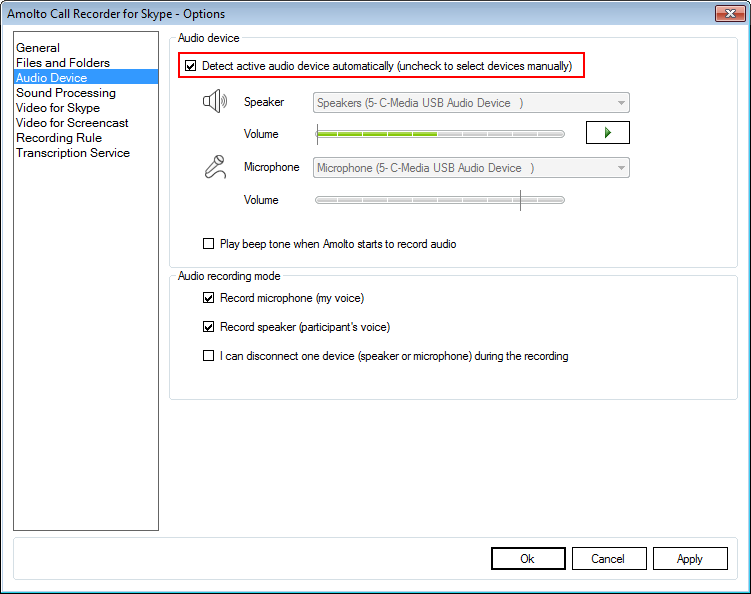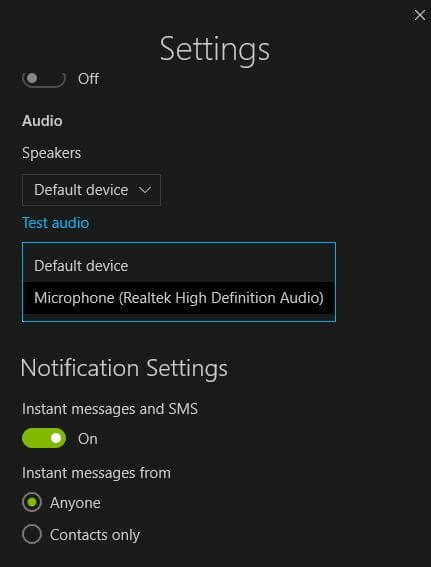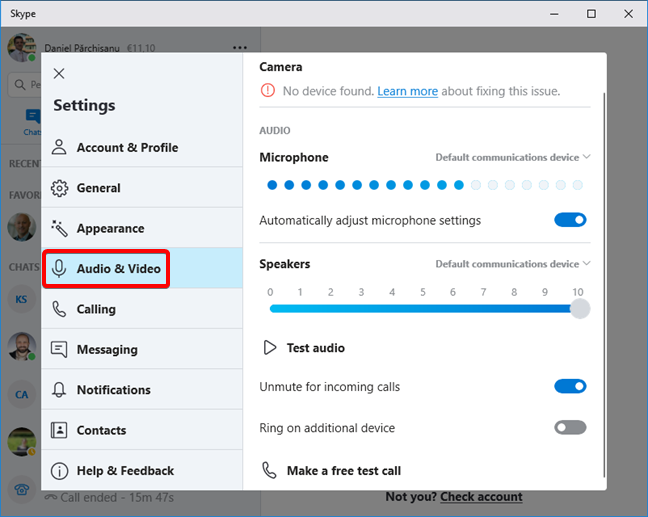

- #Audio settings for skype windows 10 how to
- #Audio settings for skype windows 10 drivers
- #Audio settings for skype windows 10 driver
- #Audio settings for skype windows 10 for windows 10
Six - if the computer is a laptop, perhaps a setting via FN has been adjusted causing the L mouse not to function. If using external speakers, there usually is a volume adjustment on them too. Also if you can adjust the volume via the headset, that might provide as simple an alternative as there is. Two - if nothing, is sound working ok other than the icon in the notification tray not responding to L click?įour - are you only trying to increase or decrease the sound volume and not do other settings?įive - is there any override on your headset that might be not allowing for the L mouse to function - not likely but I always like to eliminate any possibilities.
#Audio settings for skype windows 10 for windows 10
#Audio settings for skype windows 10 how to
How to Turn Off or Change Windows 10 Notification Sounds.

If the problem persists, try running the Troubleshooting audio playback to fix it.Ĭheck out our other articles about managing audio:
#Audio settings for skype windows 10 drivers
You can also check Windows Update for the latest drivers for your sound card. Please restart your computer and let Windows redetect it. Select your audio device, right-click it and Uninstall. Then expand Sound > video and game controller. Press Windows Key + X and click Device Manager. Uninstalling and reinstalling your audio device might resolve the issue.
#Audio settings for skype windows 10 driver
If you have recently upgraded to Windows 10, your previous audio driver might not be compatible. First, check if the volume is turned down or muted. If you’re unable to hear audio, there are some things you can try. Enhancements such as bass, loudness, and surround sound quality can be applied. If you use an application such as Skype to send and receive video calls, Windows can automatically adjust the volume when communication activity is detected.Ĭonnected external audio devices such as speakers or headphones can be modified from the Sound Settings playback options. If you use a smartphone, you might be aware of an option that lowers the audio of the active application when you receive a notification. For example, you might want to mute specific applications such as system sounds when watching a movie.Ī handy function of the Windows sound settings is the ability to modify audio behavior when multi-tasking. If they do, you’ll see them in the Mixer and can adjust the volume levels. Not all applications support this feature, though. The Volume Mixer provides options for managing volume per desktop application. This is especially handy if you want to switch between built-in audio or your headphones.Īdditional audio options can be accessed from a right-click menu. To do so, click the audio icon in the Notification Area.Ĭlick the audio output device you would like to use. The Windows 10 Anniversary Update now makes it easier to switch between different audio devices. You can use the slider to increase or lower the volume.Īudio can mute audio by clicking the speaker icon on the new volume menu.

Adjust Volume and Audio Settings in Windows 10īasic audio settings can be accessed from the Speakers notification on the taskbar. Update: If you are looking for a quality alternative sound app that adds extra features, check out the Ear Trumpet App.


 0 kommentar(er)
0 kommentar(er)
